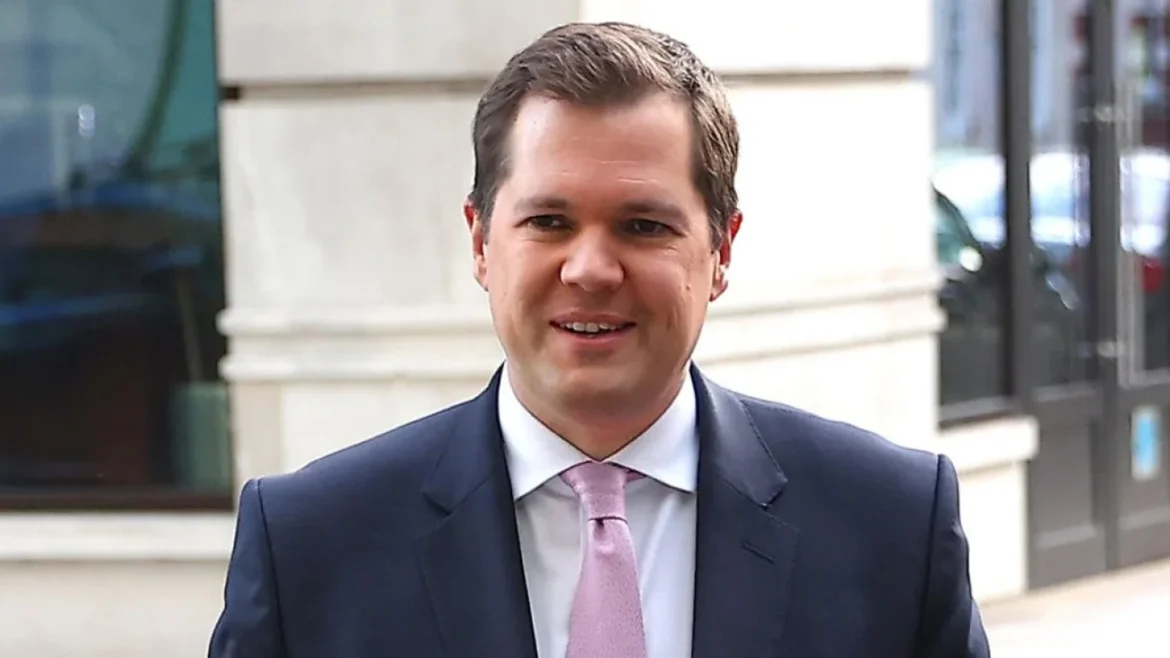With the UK general election fast approaching, political leaders across all parties are refining their strategies to secure victory. Among them, Robert Jenrick, the Shadow Justice Secretary of the Conservative Party, has made a bold statement regarding the future of the right-wing vote. Speaking at a gathering of the UCL Conservative Society in late March, Jenrick expressed his concerns over the growing divide between the Conservatives and Reform UK. He warned that if the right-wing vote remains fragmented, Labour could gain an overwhelming advantage.
Jenrick’s comments underscore a significant debate about the potential for a Conservative Reform Pact to unite right-leaning voters in the face of mounting challenges. His proposal to bridge the divide between the Conservative Party and Reform UK is stirring considerable interest and controversy in political circles. But is a Conservative R
What Is the Conservative Reform Pact?
At the heart of Jenrick’s remarks lies the concept of the Conservative Reform Pact—a strategy designed to unite right-wing voters who have been increasingly drawn to Reform UK. Jenrick warned that without this unity, the right-wing vote would remain divided, giving Labour the upper hand in the next election.
Reform UK, led by Nigel Farage, has gained traction among voters who are dissatisfied with the direction the Conservative Party has taken under recent leadership. As a result, the party now faces competition from a growing insurgency on the right, a situation that Jenrick believes could be detrimental in the long term. To prevent a split in the right-wing vote, Jenrick suggested that a Conservative Reform Pact could be the answer.
The idea behind this pact would not necessarily involve a formal merger between the two parties but rather an effort to align right-wing voters under a shared objective. Jenrick’s strategy focuses on ensuring that right-wing voters do not feel compelled to support Reform UK, but instead rally behind the Conservative Party. The goal of a Conservative Reform Pact is to consolidate the right-wing vote and prevent Labour from taking advantage of any fragmentation on the right.
Why Is Jenrick Concerned About a Divided Right-Wing Vote?
Jenrick’s concerns stem from the potential consequences of a divided right-wing vote. If Reform UK continues to attract Conservative voters who feel disenfranchised, it could create a situation where the right is unable to mount a strong challenge to Labour. Jenrick warned that this could lead to a situation where the Labour Party, under Keir Starmer, could easily secure a majority.
In his speech to the UCL Conservative Society, Jenrick stated, “If the right remains fragmented, the nightmare scenario is that Keir Starmer will easily secure a victory.” His remarks reflect the growing concern among Conservatives that if they do not act swiftly to unite the right-wing base, they risk losing the election to Labour.
The Conservative Reform Pact would seek to prevent this by bringing together Conservative and Reform UK voters who share similar values and policy preferences. Jenrick believes that the only way to overcome the electoral challenge posed by Labour is for the right to unite. This coalition would ensure that the right-wing vote remains intact, preventing Reform UK from siphoning votes away from the Conservative Party.
Can the Conservative Reform Pact Overcome Resistance from Reform UK?
One of the major challenges facing the idea of a Conservative Reform Pact is the resistance from Reform UK itself. Nigel Farage, the leader of Reform UK, has been outspoken in his opposition to any collaboration with the Conservative Party. Farage has repeatedly criticized the Tories, particularly their handling of Brexit and national policies, and has distanced his party from the Conservatives.
Farage has made it clear that Reform UK does not intend to enter into any formal alliances with the Conservatives, stating that the Tories have failed the country and their constituents. This ideological divide presents a significant obstacle for Jenrick’s vision of a Conservative Reform Pact, as Farage is unlikely to support any effort that would align his party with the Tories.
However, Jenrick remains undeterred. While he acknowledges that a formal pact between the two parties may be difficult to achieve, he stresses that the goal is to unite the right-wing voters, not necessarily the parties themselves. In this sense, a Conservative Reform Pact could take the form of an informal coalition of right-wing voters who are united in their opposition to Labour, but not necessarily bound by party affiliation.
How Could the Conservative Reform Pact Impact the Upcoming Election?
The success or failure of a Conservative Reform Pact could have profound implications for the upcoming election. Jenrick’s vision is based on the idea that a unified right-wing vote is essential for the Conservative Party to regain its position as the dominant force in UK politics. However, for this to work, the Conservative Party will need to convince disillusioned Reform UK voters to return to the fold.
Jenrick’s strategy also relies on the assumption that many Reform UK supporters are dissatisfied with the Tories but are still aligned with the broader right-wing agenda. If the Conservative Reform Pact is successful in convincing these voters that the Conservative Party is the best option for securing their values and interests, it could provide the Tories with a much-needed boost in key constituencies.
Polls indicate that several constituencies are currently leaning toward no overall control, which could allow Reform UK to make inroads in local elections. In such a scenario, a Conservative Reform Pact could help the Conservatives consolidate their support and prevent further losses. The pact could provide a crucial path to maintaining a right-wing majority and avoiding a Labour-led government.
The Road Ahead: Will Unity Prevail?
The concept of a Conservative Reform Pact represents an ambitious vision for the future of right-wing politics in the UK. While the challenges are substantial, Jenrick’s call for unity highlights the urgency of consolidating the right-wing vote to avoid a potential Labour victory. Without such a pact, the division between the Conservatives and Reform UK could lead to significant electoral losses, making it easier for Labour to take control.
Jenrick’s remarks suggest that the Conservative Party will need to demonstrate flexibility and commitment to its base to form any kind of electoral coalition. However, whether this unity can be achieved will depend largely on the willingness of Reform UK to put aside its differences with the Tories. If both parties can find common ground, a Conservative Reform Pact could become a reality.
Conclusion: The Importance of Unity for the Right
As the election approaches, the pressure on the Conservative Party to unite the right is greater than ever. Robert Jenrick’s advocacy for a Conservative Reform Pact serves as a reminder of the need for strategic alliances in a highly competitive electoral environment. While the road ahead remains uncertain, Jenrick’s push for unity highlights the critical importance of a united right-wing front. If the Conservative Reform Pact can be successfully formed, it could shift the course of the next election, ensuring that the Conservative Party has a fighting chance against Labour.
The success of this initiative will depend on the willingness of all right-wing factions to set aside their differences and work together for a common goal. The future of the Conservative Party and the UK’s political landscape may very well hinge on the outcome of this unification effort.


